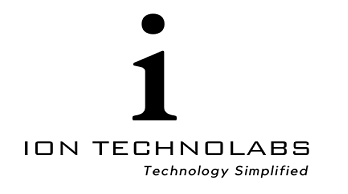Getting Started
Digital transformation is the process of incorporating computer-based technologies into an organization’s products, processes and strategies.
Which digital technologies are used, how they are implemented, and what are the goals guiding the implementation can differ from company to company. But all digital transformation initiatives aim to improve business results by adopting modern digital technology.
A digital transformation initiative can contain many different aspects. At one extreme, it can involve reinventing all facets of an organization, including supply chains, workflows, employee skill sets, the product itself, how customers interact with the organization, and organizational structure. More limited initiatives can involve adopting digital technology to improve a specific business process, product, or service, reduce costs, or solve a specific business problem. This is part of an extensive series of guides about software development.
The digitalization of society began in the second half of the 20th century and accelerated during the early 21st century. It led to global cultural changes, and a new generation of consumers who are digital-first, discovering and interacting with the world through the lens of a digital device. In this environment, businesses must adapt to appeal to consumers and speak in their language.
For many companies, new technologies can make their products obsolete, and are thus at risk of being taken over by competitors who are more agile and technically savvy. Emerging technologies enable new business models, more engaging customer experiences, innovative products and services, and other innovations, and companies must undertake digital transformation to stay competitive.
In addition, the pace of digital business transformation is accelerating. Digital transformation cannot be a one-time activity. Organizations must develop a mentality and culture of ongoing development, adapting services and systems faster and more often, continuously incorporating new technology and practices to better meet customer expectations.
1. Business Process Transformation
Business process innovation changes the way companies work internally. It affects how employees gain access to new technology and use it for their day-to-day jobs. This includes automating manual processes and maximizing investments in marketing and R&D by gathering new data and incorporating it into business decisions.
A key objective of business process transformation is cost reduction. Other objectives include reducing time to market, improving the quality of the products and services, improving customer experience, and improving brand image.
2. Business Model Transformation
This type of transformation changes business models to adapt them to the new digital environment. This requires careful consideration of how the core business of the industry operates. A successful change can disrupt an entire industry—like Netflix did for home videos and Amazon for retail.
Business model transformation often involves the strategic part of the business to explore the potential of new ways of doing business, beyond what is currently established in the industry. It focuses on innovation and “thinking outside the box” to improve business outcomes.
3. Domain Transformation
Domain transformation means transcending traditional boundaries currently facing a brand’s markets and possibilities. For example, the online retailer Amazon launched Amazon Web Services, now the world’s largest cloud computing provider with billions of dollars in revenue. Amazon took existing capabilities (their large, highly advanced data centers) and turned them into a new opportunity that created a whole new market.
This potential for domain transformation exists in many industries and is driven by the use of technologies like artificial intelligence, new types of mobile and wearable technology, and the internet of things.
4. Cultural Transformation
Digital transformation has a cultural component, which is critical to the success of any digital transformation initiative. For many organizations, this transition can be challenging. Digital transformation must start with education for existing staff, to ensure everyone understands the potential of new technology for improving the business, forging internal collaboration, and creating new methods for engaging customers.
Leveraging technology, and creating a process of continuous innovation, requires a workforce that can adapt to change and is willing to continuously learn and develop. These skills and capabilities are necessary to integrate technology into the fabric of a company and transform processes, business models, products, and communications.
5. Cloud Transformation
The cloud transformation process helps organizations migrate information systems to cloud computing environments. It can take various shapes—for example, a company can migrate only specific applications, data, or services, and retain some legacy infrastructure, or move their entire infrastructure to the cloud.
Another dimension of cloud transformation is ownership—some organizations leverage the public cloud, a third-party data center operated by a cloud provider. Others set up cloud computing infrastructure in-house, which is known as a private cloud. Many combine the two models to create hybrid cloud management of infrastructure.
Cloud innovation offers many benefits, including more efficient data sharing and storage, faster time-to-market, and greater organizational scalability and flexibility. At the same time, it raises major organizational challenges including governance, security, and cost control.
Here are key technologies enabling digital transformation:
- Cloud computing—enables organizations to quickly and affordably access computing resources, advanced software, new updates and functionalities. Instead of waiting weeks and months to set up on-premises resources, organizations can use the cloud to access resources over the Internet from any location in the world.
- Commoditized IT—enables organizations to shift the focus of investments and human resources from infrastructure to innovation that provides value to customers and differentiates the organization in the marketplace.
- Mobile platforms—enable work from anywhere in the world, at any time, providing quick access to corporate resources.
- Machine learning and artificial intelligence (AI)—provide organizations with intelligent insights that empower more accurate and faster decision-making. It helps inform various strategic areas like marketing, sales, and product development.
- Automation—enables organizations to delegate repetitive tasks to machines, freeing up time for human resources to improve productivity and efficiency.
- Augmented reality (AR) and virtual reality (VR)—provide access to services remotely in a gamified way that encourages engagement.
- Internet of Things (IoT) devices—provide data to inform AI services, which offer automation and personalization.
- Edge computing—helps process data at the device level, keeping it private and accessible and enabling low latency data processing.
- Blockchain technology is revolutionizing the entire technology landscape, enabling decentralization across numerous industries. Payment processing through ledgers that anonymize transactions is the basic use case.
All of these technologies are employed by businesses worldwide to deliver unique services and experiences. Digital transformation strategies help organizations keep up with this ever-changing pace, identify relevant technologies, and implement them at scale and on budget.
Here are some of the common objectives of digital transformation in organizations:
- Improve customer experience—use analytics to build richer content experiences and forge deeper relationships with audiences across multiple channels.
- Rethink computing infrastructure—migrate from a physical data center to a cloud platform to accelerate development, improve reliability, and shorten time to market.
- Improve internal collaboration—use collaboration tools like video conferencing, online task management, and messaging platforms to boost productivity of employees.
- Improve content accessibility—most organizations rely on content, either for internal activities or as part of customer-facing activity. Digital transformation can make content accessible in new ways through enterprise search and new delivery platforms.
Here are some examples of how digital transformation can contribute to organizations in different industry sectors:
- Manufacturing—the internet of things (IoT) can increase efficiency and profitability by enabling predictive maintenance and process improvement, reducing machine downtime and scrap.
- Retail—digital technology uses digital devices, channels, and platforms to create an improved customer experience. For example, many retailers are extending the shopping experience from brick-and-mortar stores to websites and web applications. Chatbots, artificial intelligence and advanced data analytics enable retailers to deliver personalized recommendations. Digital technology is also providing a more engaging in-store experience.
- Healthcare—the healthcare industry is introducing a range of digital capabilities that can adapt medical services, making them more patient-centric and value-based. For example, many healthcare providers are offering virtual medical appointments and networked electronic health records (EHR). Digital capabilities can benefit not only patients but also providers and payers, while reducing service provisioning costs.
- Smart cities—by combining existing physical infrastructure with digital technologies, digital smart cities are becoming more efficient, providing citizens with a higher quality of life. For example, smart cities can monitor and solve environmental issues, optimize public transport, and promote citizen participation and collaboration through digital means. Smart cities leverage technologies such as sensors, artificial intelligence, and video analytics.
- Banking—financial institutions are transitioning from the traditional operating model of branch offices with bankers providing face-to-face service, to a variety of digital models. Banks are rolling out web applications and mobile applications to provide access to bank services, and are collaborating with FinTech startups to provide new mobile payment solutions.

